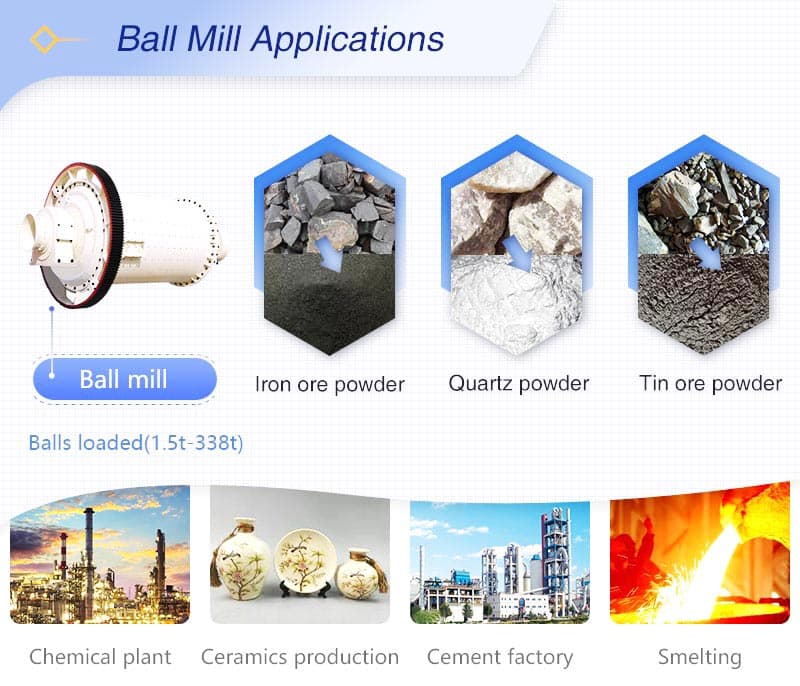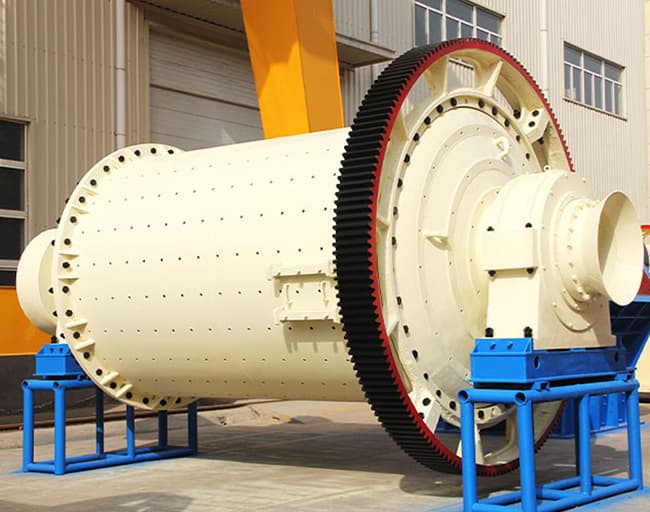What Is Ball Mill?
Ball mill is a kind of grinding equipment widely used in the industrial field. Its working principle is based on the interaction of mechanical force and physical force. The material is crushed and ground through the rotating cylinder and the internal grinding media (such as steel balls). The working principle of ball mill and its related components are introduced in detail below.
1. The structure of ball mill
The ball mill is mainly composed of a feeding device, a cylinder, a discharging device, a transmission device and a supporting device. Among them, the cylinder is the core component of the ball mill, and the grinding medium (such as steel balls) is installed inside. After the material enters the cylinder from the feeding device, it is gradually crushed and ground into the required particle size under the rotation of the cylinder and the impact and grinding of the grinding medium.
2. Working principle of ball mill
1. Rotation of the cylinder: The cylinder of the ball mill is driven to rotate by the transmission device, and the rotation speed of the cylinder can be adjusted according to factors such as the material properties and grinding requirements. The rotation of the cylinder provides the necessary kinetic energy for the grinding medium, so that it can fully move and collide in the cylinder.
2. Impact and grinding of grinding media: During the rotation of the cylinder, the grinding media (such as steel balls) rise, fall and roll with the rotation of the cylinder. When the grinding medium falls from a certain height, it will generate a large impact force and friction to crush and grind the material. At the same time, the relative movement between the grinding media will also produce shear, extrusion and friction forces on the material, thereby further promoting the crushing and grinding of the material.
3. Mixing of materials and grinding media: During the rotation of the cylinder, the materials and grinding media will be fully mixed and contacted. This mixing and contact allows the material to be evenly affected by the grinding media, thereby ensuring the uniformity and stability of the grinding effect.
4. Renewal and replenishment of grinding media: As the grinding process proceeds, the grinding media will gradually wear and consume. In order to maintain the stability and durability of the grinding effect, it is necessary to regularly check and replace the grinding media that are severely worn, and replenish new grinding media in time.
3. The working process of the ball mill
1. Feeding stage: The material enters the cylinder through the feeding device. During the feeding process, the flow rate and particle size distribution of the material need to be controlled to ensure that the material can be evenly distributed inside the cylinder.
2. Grinding stage: The material is fully mixed and contacted with the grinding media in the cylinder, and is gradually crushed and ground into the required particle size under the impact, grinding and shearing forces of the grinding media.
3. Discharging stage: After a certain period of grinding, qualified materials will be discharged from the cylinder through the discharging device. During the discharging process, it is necessary to control the discharging speed and amount to ensure that the material can be discharged stably and meet production requirements.

4. Application of ball mills
Ball mills are widely used in cement, ceramics, chemicals, mining, metallurgy and other fields. In cement production, ball mills are mainly used to grind raw materials such as clinker and gypsum into cement powder; in ceramic production, ball mills are used to grind raw materials into fine slurry; in the chemical and mining fields, ball mills are used to grind various ores and chemical raw materials.





 Send Email
Send Email Get Price List
Get Price List